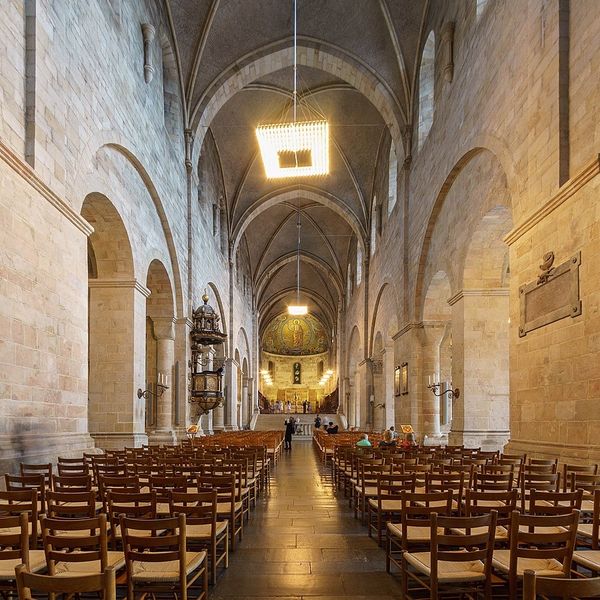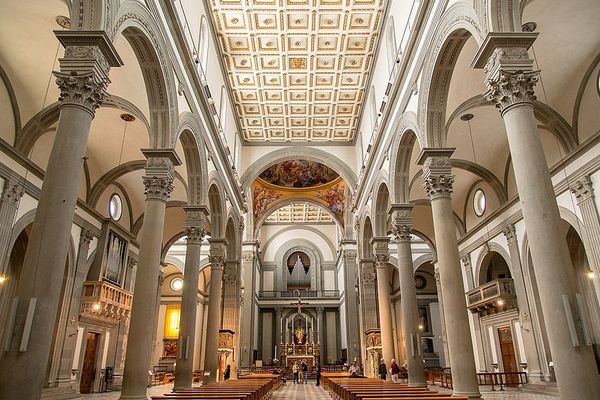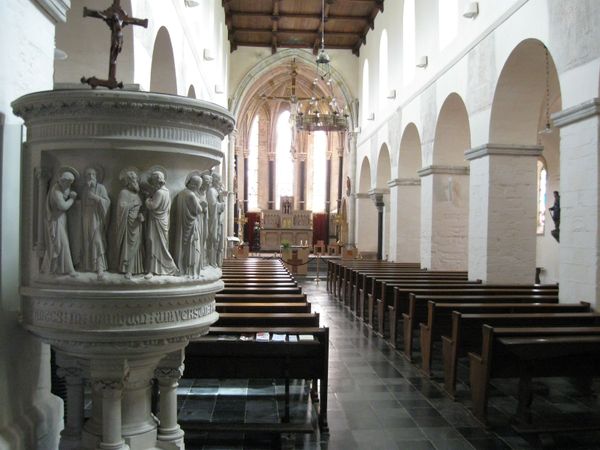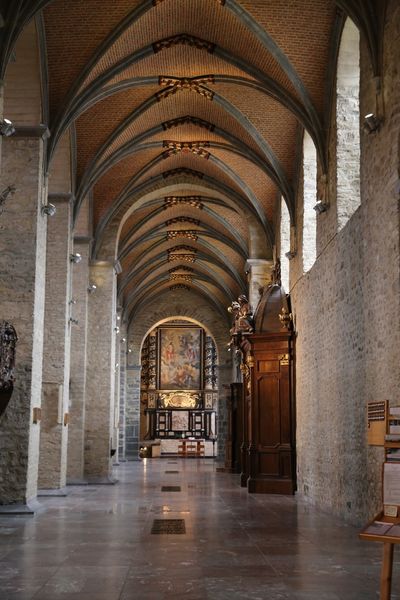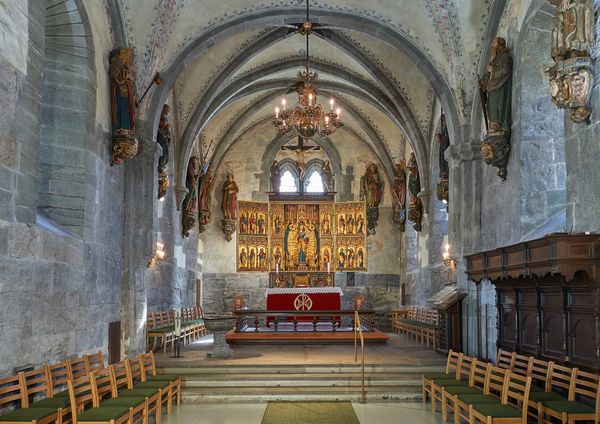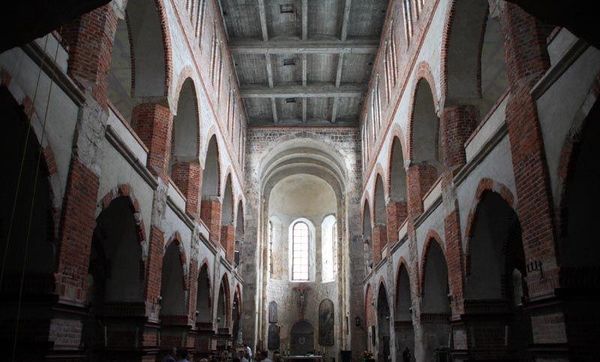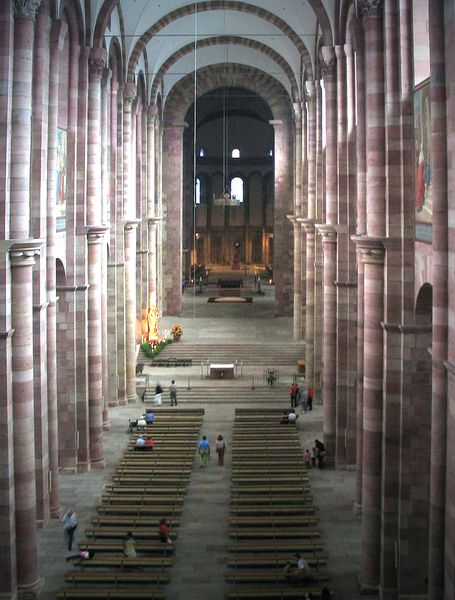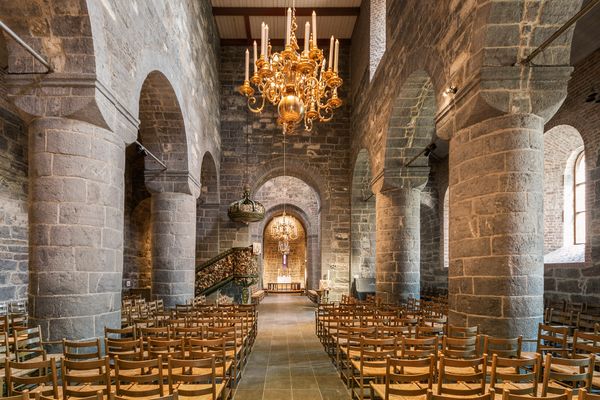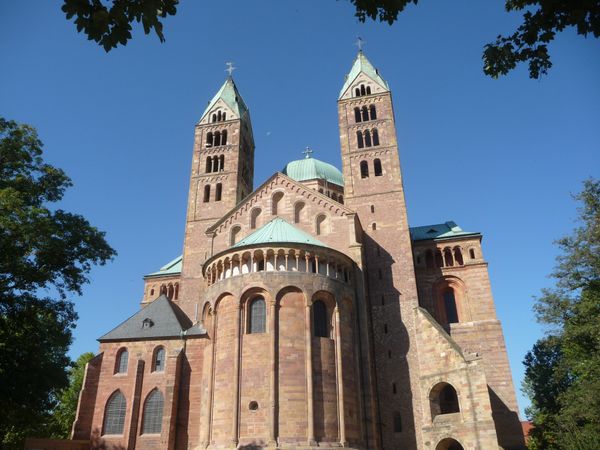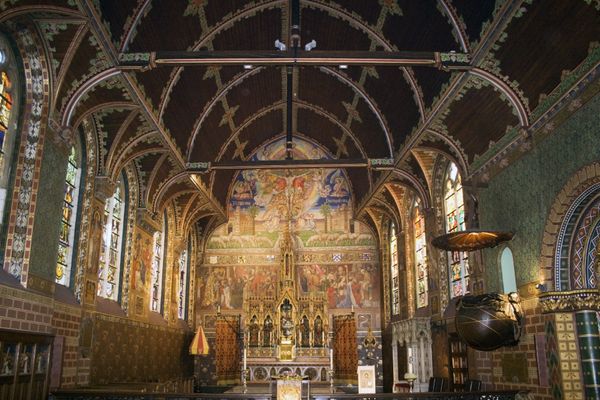
architecture
#
medieval
#
historic architecture
#
traditional architecture
#
romanesque
#
column
#
arch
#
architecture
Copyright: Public domain
Editor: We're looking at "Interior of Worms Cathedral, Germany," built around 1181. It’s an imposing piece of Romanesque architecture. The sheer scale is impressive, but the heavy columns and rounded arches give it a somber feel, almost fortress-like. What do you see in this work? Curator: It's more than just imposing; it’s a statement of power, both religious and political. Consider the context: 1181 was a time of intense social hierarchy and conflict. Romanesque architecture, with its massive walls and limited light, embodies this sense of authority. The weight of the structure mirrors the weight of the Church and the Holy Roman Empire. Do you notice the way the architecture seems to direct your gaze upward? Editor: Yes, toward the altar… It's designed to make you feel small, perhaps? Curator: Exactly. The cathedral’s design implicitly reinforces a specific power dynamic. Who is elevated, and who is humbled? Who has access to light and knowledge, and who is left in shadow? The imposing structure also functioned as a refuge in times of conflict; but who could seek refuge? Editor: It sounds like it catered to the elite. Now that I’m looking again, I'm not surprised common people were likely kept outside of such structures and power. Curator: Precisely. Architecture, especially religious architecture, isn’t just about aesthetics; it’s about reinforcing a worldview. By understanding that worldview, we can unpack the biases and power structures embedded within the very stones of this cathedral. It is imperative to know to fully embrace the weight such architecture had at that time, and even today. Editor: I had only thought about its visual impact until now. It is powerful knowing this was designed to oppress the common person.
Comments
No comments
Be the first to comment and join the conversation on the ultimate creative platform.
